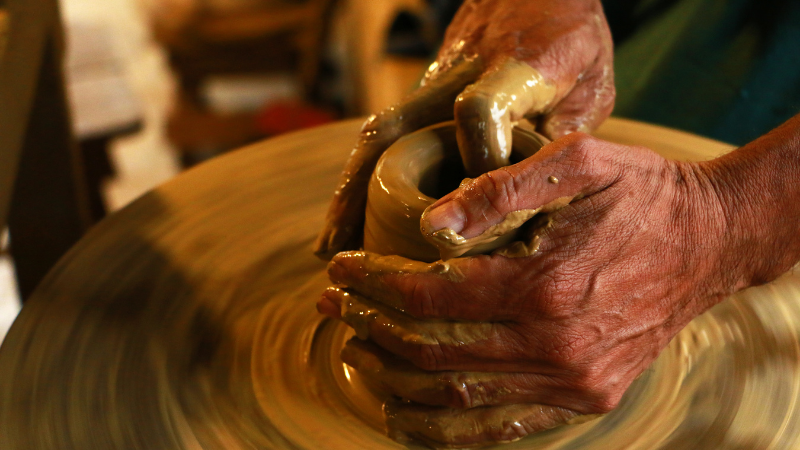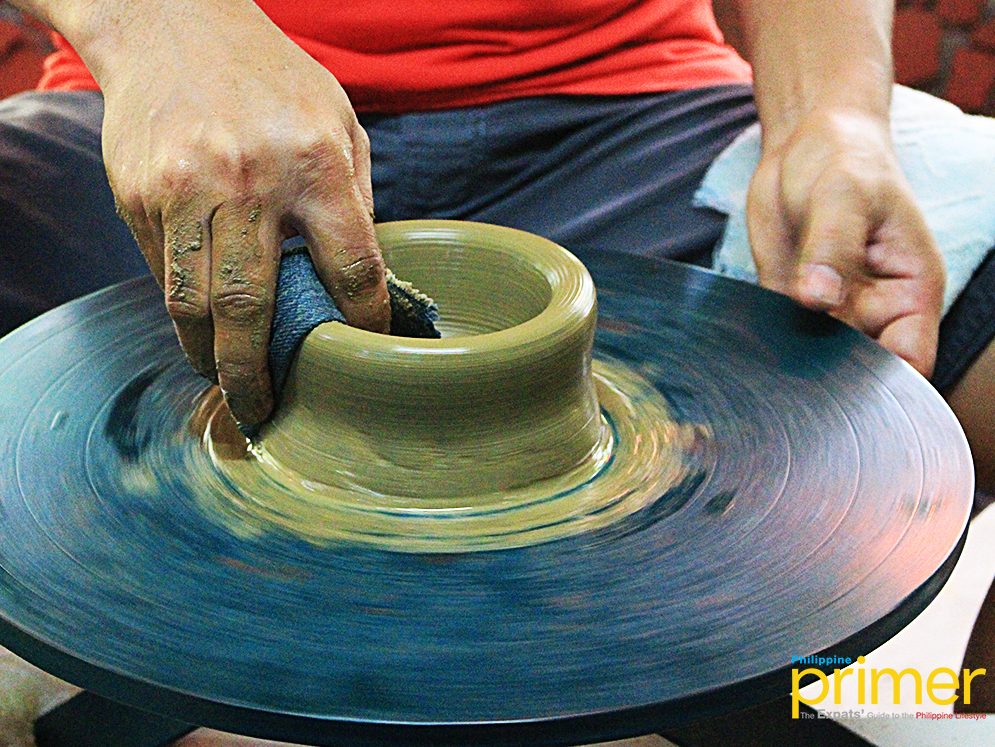The Egyptians made kilns to place their clay pots in for firing. Pottery of this kind is common in imperial Rome a century later.
 Where To Take A Pottery Class In Manila Beyond
Where To Take A Pottery Class In Manila Beyond
Later they started glazing and decorating the pots.

When did pottery making begin in the philippines. By the 2nd Millennium BC agriculture and sedentary living had been introduced to the archipelago and at least some of the indigenous inhabitants of the islands were living in settled villages making pottery and cultivating rice. The History of Pottery is believed to have begun in the period 29000 to 25000 BC when the earliest known ceramic molded of clay and fired objects were created including the Venus or Grimaldi figurines. In the first millennium BC.
Like the regional and cultural differences in pottery the types of designs were dictated by cultural and geographic bounderies. C earthenware pottery was produced on a mass scale by a potters wheel in many parts of the world. The earliest pottery can be traces to between the eighth and sixth millennium BC.
Their technology was said to be more advanced than that of their predecessors. The Malays were brown-skinned and of medium height with straight black hair and flat noses. Jewelry-making is a source of livelihood for the family and it is traditionally a home-based industry.
In Korea stoneware was first made during the Silla dynasty 57 bce 935 ce. From a very early date in history some say at least 400 B. Like the Indonesians they also traveled in boats.
Its not known exactly when the potters wheel arrived on the scene but this was an important development in pottery making. The colour of the body varies considerably. - 225 AD and had pot covers shaped like human heads.
More recent immigrants include Chinese beginning in the ninth century CE and Spanish conquistadors in the sixteenth. The earliest forms which were found at the Hassuna site were hand formed from slabs undecorated unglazed low-fired pots made from reddish-brown clays. First crude designs but these evolved into elaborate and complex designs rather quickly.
High-fired potteries were first made around 1000 years ago which led to what scholars describe as the ceramic age in the Philippines. The ancient city of Changnan in modern day Jingdezhen pottery capital combined the natural resources so well utilizing the natural celadon material and glaze from the southern Yue kiln and the pure white porcelain from the northern Xing Kiln from the high-quality earth surrounding the Gaoling Mountain in the area to create smooth bright and literally luminescent pottery. It is believed that the skill of our early Flipino in making jewelry are adopted from their Asian neighbors like the Chinese.
The Greeks began throwing pots on wheels and creating exquisite forms. Early humans made pottery as they needed vessels to store grains liquids and cooked food. From these would have been extended the pots formed by hand and decorated with crude tools.
Around 700 AD the people of the Southwest began decorating their pottery with paint. Potterys origins remain unknown but by the time it was introduced in the Philippines the technology already. It may be that the development occurs independently in the Middle East and in China but by now there could also be a direct influence in either direction.
These anthropomorphic earthenware pots date back to 5 BC. The characteristic colour is green from copper in the glaze. They used these ceramic jars to hold the deceased.
They were followed by an influx from Malaysia. Humans learned to make clay pottery which was shaped by hand then baked in fire. By the Tang Dynasty AD 618-907 the first mass pottery manufacturing kilns were begun at the imperial Jingdezhen site and the beginning of export trade of Chinese porcelain to the rest of the world opened up.
They were believed to have come from Java Sumatra Borneo and the Malay Peninsula more than 2000 years ago. History of the Philippines. This was simply a moveable platform that allowed them to turn the pot as they worked instead of having to get up and walk around it.
Their pottery was often included in funeral ceremonies. Fine white stoneware was made in China as early as 1400 bce Shang dynasty. Since the early 16th century jewelry making in the country has been in existence.
By about 5000 BC pottery-making was becoming widespread across the region and spreading out from it to neighbouring areas. By this time glazed pottery is also being manufactured in Han dynasty China. Glazed pots make their appearance in the Middle East in about the 1st century BC possibly being developed first in Egypt.
Important pottery artifacts from the Philippines include the Manunggul Jar 890-710 BCE and the Maitum anthropomorphic pottery 5 BC-225 AD. Pottery making began in the 7th millennium BC. Other pottery used to hold remains of the deceased were decorated with anthropomorphic designs.
Native Filipinos created pottery since 3500 years ago. The earliest evidence of a regular human presence in the Philippines dates to about 50000 BP. At the beginning of the Bronze Age around 3000 BC potters were using the slow wheel.
This period is known as the Upper Paleolithic period sometimes referred to as the Late Stone Age. In Japan during the 13th century Kamakura period. Pre-Colombians ancient Iberians the ancient Romans who molded pottery with raised decoration and the ancient Japanese all created beautiful pottery for domestic use as well as for.
People first reached the Philippines about 30000 years ago when the first people immigrated from Sumatra and Borneo via boats or land-bridges. The potters wheel enable then to make pots in different shapes and sizes in much lesser time. It can be red brown gray white or black.
Last to migrate to the Philippines according to Beyer were Malays.
 Jarkata 15 Indonesian Art Indonesia Southeast Asia Travel
Jarkata 15 Indonesian Art Indonesia Southeast Asia Travel
Philippine Ceramics Arts And Crafts Center Tiwi Albay B L A S T Live Life To The Fullest Don T Stay Put
 Man Making Pottery Outside Udaipur India Pottery Videos Traditional Pottery Pottery
Man Making Pottery Outside Udaipur India Pottery Videos Traditional Pottery Pottery
 Potter Indian Pottery Pottery Pottery Making
Potter Indian Pottery Pottery Pottery Making
 Mybeautifuliloilo Pottery Making In Miagao True To Tradition
Mybeautifuliloilo Pottery Making In Miagao True To Tradition
 Vigan Pottery Ilocos Sur Philippines Traditional Pottery Vigan Pottery
Vigan Pottery Ilocos Sur Philippines Traditional Pottery Vigan Pottery
 Pottery As Cultural Livelihood Treasure Of Itawes Philippine Information Agency
Pottery As Cultural Livelihood Treasure Of Itawes Philippine Information Agency
 Spot The Best Pottery Places In The Philippines Our 7107 Islands
Spot The Best Pottery Places In The Philippines Our 7107 Islands
 Preservation Or Profitability The Dilemma Of A Dying Industry In A Third Class City Sunstar
Preservation Or Profitability The Dilemma Of A Dying Industry In A Third Class City Sunstar
 Red Clay Pagdamilian In La Union Philippine Primer
Red Clay Pagdamilian In La Union Philippine Primer
 How Women Artists From Sagada Are Changing The Face Of Pottery
How Women Artists From Sagada Are Changing The Face Of Pottery

0 comments:
Post a Comment